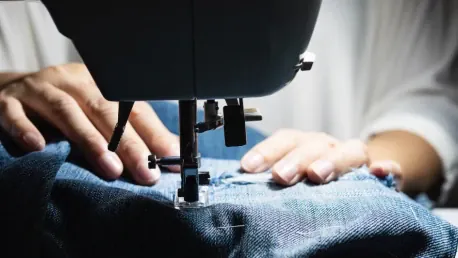The fashion industry is undergoing a significant transformation, driven by the integration of automation in logistics and supply chain management. This shift is essential to meet the rapidly changing demands of modern consumers, who expect speed, accuracy, and personalized experiences. Automation technologies are revolutionizing the way fashion brands operate, making them more efficient and competitive in a dynamic marketplace. From the development of AI-powered robots and warehouse management software to the implementation of automated storage systems, these advancements are helping fashion companies streamline their processes and meet consumer expectations effectively.
The Role of Automation in Fashion Logistics
Automation has become a cornerstone in fashion logistics, enhancing the speed and accuracy of material flows while reducing physical strain on workers. Technologies such as AI-powered robots, warehouse management software, and automated storage systems streamline operations, enabling the creation of efficient omnichannel logistics systems. These advancements allow fashion companies to manage inventory, process orders, and handle returns with unprecedented efficiency. Automated systems are particularly beneficial in managing the complexities of fashion logistics. For instance, robotic depalletizing systems can remove goods from shipping pallets and place them onto automated conveyors, speeding up the inbound process and reducing workplace injuries. Additionally, multi-level storage systems and retrieval robots address space issues and improve picking accuracy, ensuring that products are readily available for shipment.
Warehouse management software serves as the operational control center, seamlessly integrating with automated systems to lower costs, adapt to seasonal changes, and boost fulfillment process efficiency. This kind of software is indispensable, as it ensures that the different automated components work harmoniously together. Picking and packing automation is another critical area where technology has made a significant impact. Automated conveyors deliver items to ergonomic stations where workers can efficiently pack orders. These packages are subsequently labeled by robotic arms and dispatched for delivery, greatly increasing speed and accuracy. By leveraging these automated solutions, fashion companies can meet the stringent demands of modern consumers while maintaining high standards of operational competence.
Meeting Evolving Consumer Demands
Today’s shoppers have heightened expectations from fashion brands, including personalized experiences, diversity, and sustainability. Consumers seek customized recommendations, virtual fitting rooms, and products that cater to various body types, ages, genders, and races. These desires are driven by a need for inclusivity and a bespoke shopping experience that makes each consumer feel valued and unique. Moreover, there is a growing demand for eco-friendly materials and ethical business practices, with consumers increasingly prioritizing sustainability in their purchasing decisions.
Speedy delivery is another critical demand, with consumers expecting products within one to three days, and increasingly, same-day delivery. Automation plays a crucial role in meeting these expectations by streamlining the picking and packing processes. Automated systems deliver items to ergonomic stations where workers pack orders, which are then automatically labeled by robotic arms for delivery. This efficiency ensures that fashion brands can meet tight delivery windows and maintain customer satisfaction. These high-tech solutions not only satisfy consumer demands for rapid delivery but also enhance the overall consumer experience, fostering brand loyalty and repeat business. As technology continues to evolve, the ability to provide personalized, diverse, and sustainable products will become a significant competitive advantage for fashion brands.
Overcoming Logistical Challenges
The fashion industry faces numerous logistical challenges, including supply chain disruptions due to global conflicts, economic fluctuations, and transportation delays. Managing inventory amidst shifting trends, fluctuating shipping costs, rising labor expenses, high return rates, and the complexity of maintaining an omnichannel customer experience are additional hurdles that fashion brands must navigate. Supply chain resiliency has become more critical than ever in responding to these external pressures and maintaining business continuity.
Automated solutions offer innovative ways to address these challenges. For example, warehouse management software acts as the operational control center, syncing with automated systems to lower costs, adapt to seasonal changes, and boost fulfillment process efficiency. By leveraging automation, fashion companies can mitigate the impact of supply chain disruptions and maintain smooth operations even during periods of uncertainty. Additionally, automated storage and retrieval systems help in managing inventory more effectively. These smart systems ensure that popular items are readily accessible, while less in-demand items are stored efficiently, optimizing warehouse space and reducing the time needed to fulfill orders. By addressing and overcoming these logistical challenges through automation, fashion brands can maintain high service levels and adapt to the ever-changing economic landscape.
Custom-Tailored Automation Systems for Resilience
Fashion brands require scalable logistics solutions to handle rapid changes and market demands. Tailored automation systems provide the necessary flexibility to adapt to these fluctuations. An example of this is C-LOG’s collaboration with TGW Logistics to optimize Groupe Beaumanior’s Fulfillment Center using automated picking stations and a shuttle warehouse. This innovation increased productivity and shortened lead times, demonstrating the effectiveness of custom-tailored automation solutions. Tailored systems can be designed to meet the specific needs of each brand, providing a competitive edge in a rapidly evolving market.
During slow periods, AI-driven robots and other automated systems can be adjusted to maintain efficiency and reduce operational costs. This adaptability ensures that fashion brands can remain resilient and responsive to market changes, maintaining a competitive edge in the industry. For instance, automated systems can scale operations up or down based on demand forecasts, ensuring optimal resource usage regardless of market conditions. This flexibility not only helps in managing costs but also in preparing for peak seasons and promotional events. By developing and implementing custom-tailored automation solutions, fashion brands can ensure they are well-equipped to handle the demands of a dynamic marketplace.
Embracing Sustainability Through Automation
Sustainability is a priority for modern consumers, and the fashion industry is responding by integrating eco-friendly practices into its operations. Automation plays a significant role in this shift, enabling more efficient use of resources and reducing waste. For instance, automated systems can optimize the use of materials, minimize energy consumption, and streamline recycling processes. These systems help in using fewer raw materials by optimizing cutting and production processes, and they also reduce scrap and recycling costs.
Fashion brands are also leveraging automation to enhance transparency and traceability in their supply chains. By using advanced tracking technologies, companies can monitor the origin and journey of their products, ensuring that they meet ethical and environmental standards. This transparency not only builds consumer trust but also aligns with the growing demand for sustainable fashion. Brands that can offer detailed information on the ethical and environmental footprint of their products are likely to gain a competitive edge. Automation thus serves as a critical enabler of sustainable practices, helping brands align their operations with consumer expectations and global sustainability goals.
The Future of Fashion Logistics
The fashion industry is experiencing a major shift due to the adoption of automation in logistics and supply chain management. This evolution is crucial to satisfy the fast-changing preferences of today’s consumers, who demand quick service, precision, and personalized shopping experiences. Automation technologies are transforming how fashion brands function, making them more efficient and competitive in a rapidly evolving market. Innovations like AI-driven robots, advanced warehouse management software, and automated storage systems are key components of this transformation. These technologies help fashion companies streamline their operations, ensure timely deliveries, and maintain high levels of accuracy, thereby meeting consumer expectations more effectively. The integration of automation solutions not only enhances productivity but also allows fashion brands to better navigate the complexities of modern consumer demands and market competition. This shift towards automated systems is essential for the fashion industry to remain relevant and responsive in an increasingly digital world.









